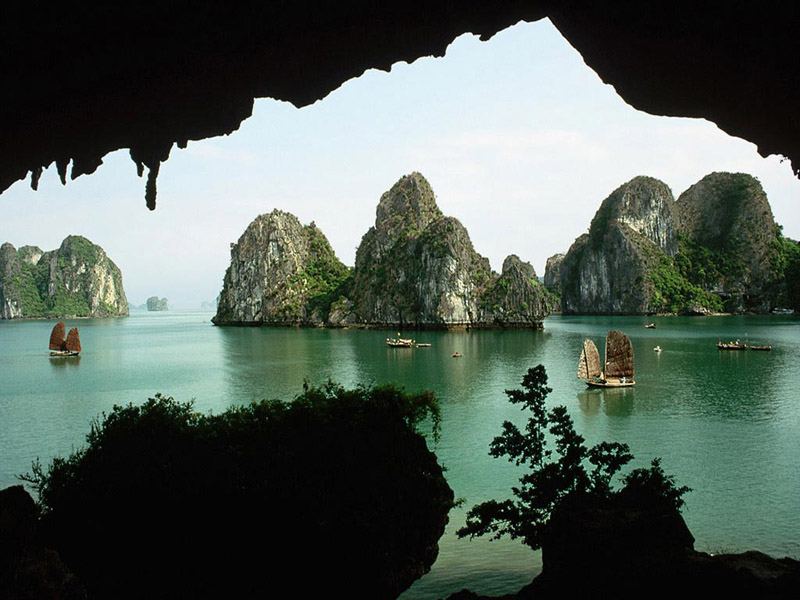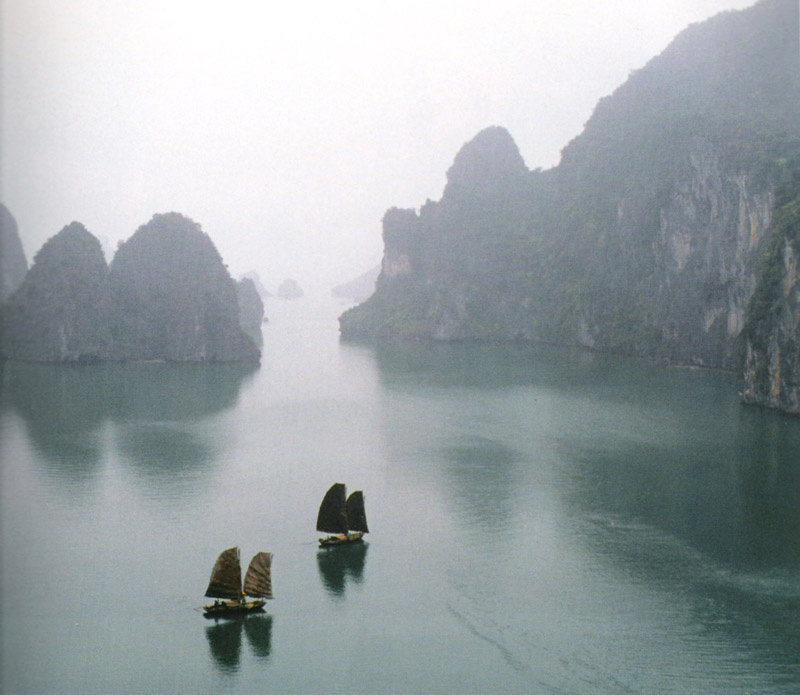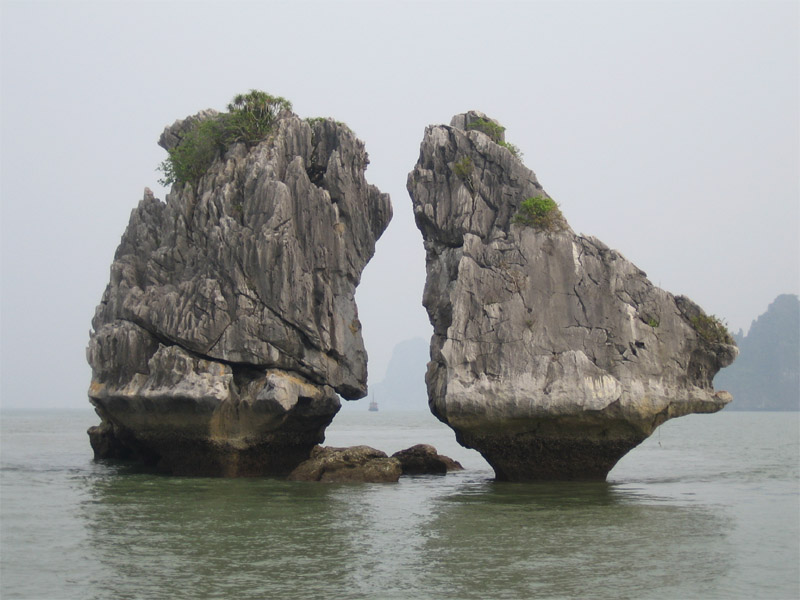 |
 |
HALONG BAY - VIETNAM
 |
 |
| Location: | Geographic coordinates: | Area: | Area - comparative: |
| Southeastern Asia, bordering the Gulf of Thailand, Gulf of Tonkin, and South China Sea, alongside China, Laos, and Cambodia. | 16 10 N, 107 50 E | total: 331,210 sq km | slightly larger than New Mexico |
| Population: | Languages: | Capital: | Currency: |
| 86,967,524 | Vietnamese (official), English (increasingly favored as a second language), some French, Chinese, and Khmer; mountain area languages (Mon-Khmer and Malayo-Polynesian) | Hanoi (Ha Noi) | Dong (VND) |



| Types of rocks: | Karst topography - landscape marked by the dissolution of limestone. |
Ha Long Bay (literally: Descending Dragon bay). The bay features thousands of limestone karsts and isles in various sizes and shapes. These zones share similar geological, geographical, geomorphological, climate and cultural characters. Ha Long Bay has an area of around 1,553kmē, incuding 1,960 islets, most of which are limestone. The core of the bay has an area of 334kmē with a high density of 775 islets. The limestone in this bay has gone through 500 million years of formation in different conditions and environments. The evolution of the karst in this bay has taken 20 million years under the impact of the tropical wet climate. The diversity of the enivironment, climate, geology, geography, and geomorphology in the area have created biodiversity, including tropical evergreen biosystem, oceanic and sea shore biosystem.
© Guillermo Rocha, P. G. / Brooklyn College Geology Department